17 Album Covers From The ’60s That Were Too Controversial For Stores
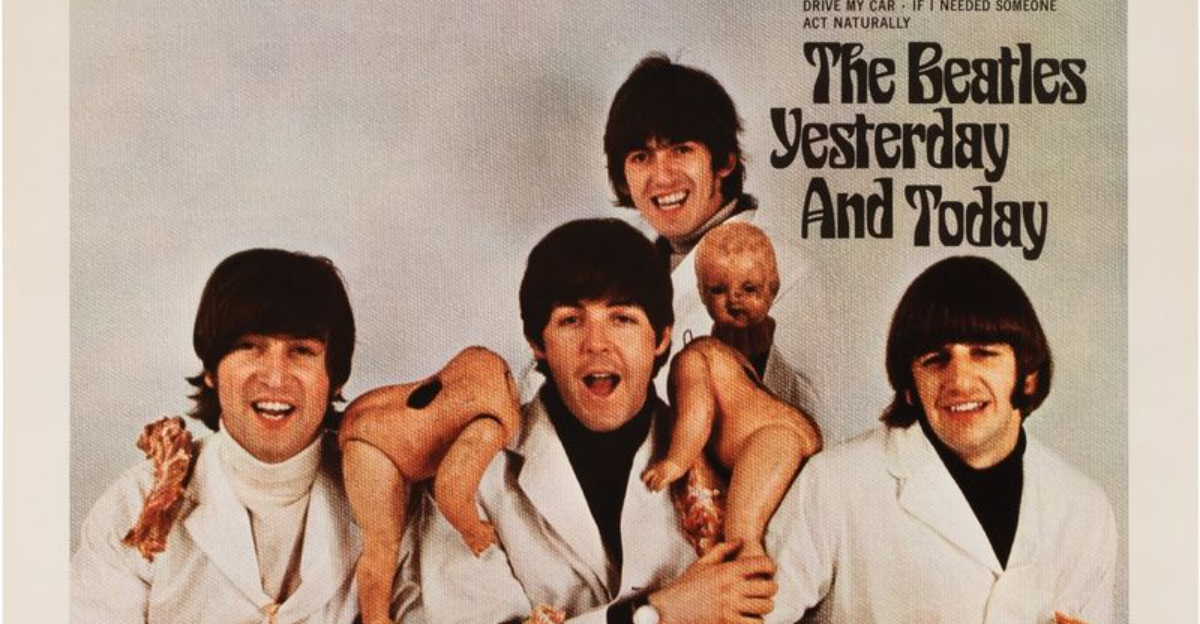
Ah, the swinging ’60s—a psychedelic swirl of groovy tunes, sky-high hairdos, and rebellious spirit. But it wasn’t just the music that raised eyebrows—it was the album covers!
Back then, cardboard sleeves weren’t just packaging; they were bold, artsy statements that sometimes pushed the envelope so far, it fell off the record shelf. Who knew a 12-inch square could cause such a stir?
From barely-there outfits to bizarre imagery that made your grandma clutch her pearls and cross herself twice, these covers stirred up enough controversy to get banned, censored, or hidden behind the counter. Some were edgy, some were absurd, and others were just plain what were they thinking?
Either way, they became part of rock ‘n’ roll legend. So cue the lava lamp, grab a snack, and prepare to be scandalized (in the most nostalgic way) by these 17 album covers from the ’60s that shocked a generation and gave the word “groovy” a whole new edge.
1. The Beatles – Yesterday and Today (1966)

The Beatles, ever the purveyors of peace and love, decided to stir the pot with their “Yesterday and Today” album cover. Dubbed “The Butcher Cover,” it featured the Fab Four looking dapper yet disturbingly casual amidst a heap of raw meat and dismembered baby dolls.
Unsurprisingly, stores didn’t find this display particularly appetizing and quickly pulled the album from shelves. These original covers are now collector’s gold, worth more than a Beatles’ reunion tour ticket.
Today, I’m just glad they stuck to singing ‘Let It Be,’ instead of ‘Let It Bleed.’ Who knew a little beef could cause such a ruckus? This cover is now a relic of the rebellious ’60s. It stands as a testament to how a cheeky photo shoot could send shockwaves stronger than a bass guitar riff through the conservative retail world.
2. The Rolling Stones – Their Satanic Majesties Request (1967)
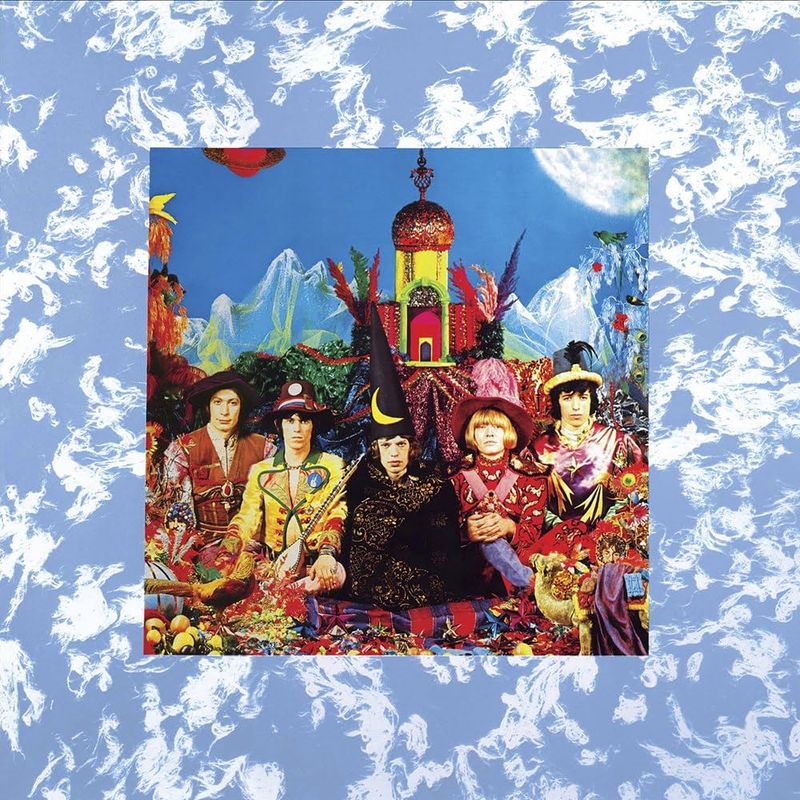
The Rolling Stones took a bold leap into the psychedelic abyss with “Their Satanic Majesties Request.” The album’s cover was a trippy 3D spectacle, designed to give you a contact high just from staring at it. But it wasn’t just the swirling colors and far-out imagery that got people’s knickers in a twist—it was the devilish title.
When stores saw the word ‘Satanic,’ they clutched their pearls and fainted faster than you can say ‘Jumpin’ Jack Flash.’ Leave it to the Stones to make a cover that’s both a visual trip and a pun-filled nod to the retail reaction.
Who knew a simple title could make such a devil of a difference? It’s an album that proves sometimes, all you need is a little controversy to rock the boat and the record store shelves.
3. Jimi Hendrix – Electric Ladyland (UK Cover, 1968)
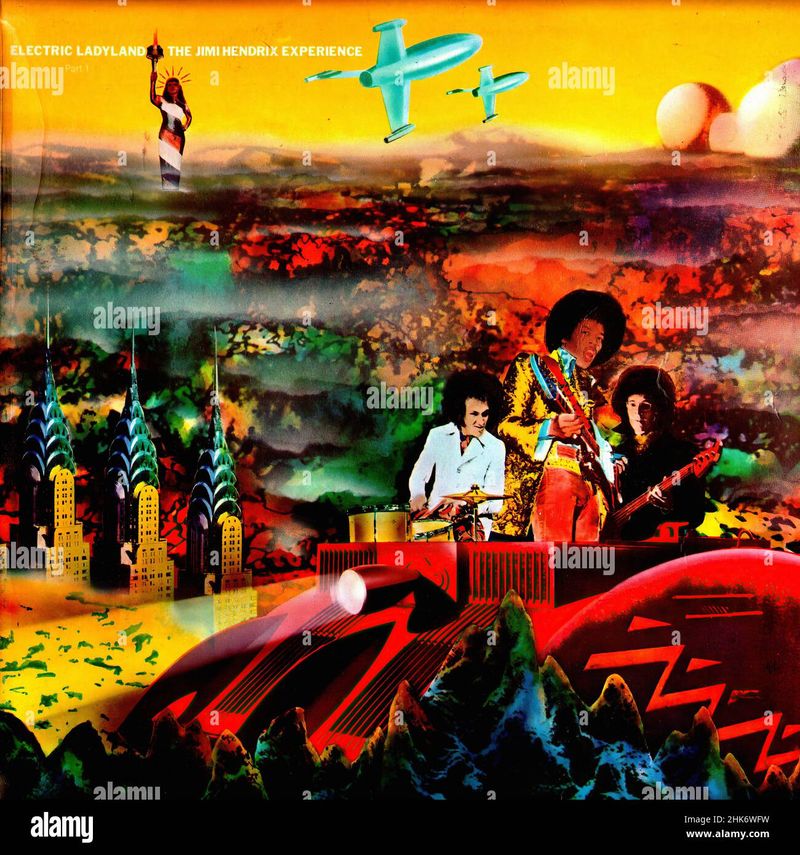
Jimi Hendrix, the guitar god himself, managed to strum up a scandal with the UK cover of “Electric Ladyland.” Imagine a room full of naked women, lounging around like it’s a Sunday picnic—only without the sandwiches.
This cover didn’t exactly strike the right chord with stores, who promptly declared it too spicy for the general public. Across the pond, the U.S. got a more ‘safe-for-storefront’ version, featuring nothing more controversial than Hendrix’s own face. You could say the UK cover was Hendrix’s cheeky way of saying, ‘Let’s get naked and jam.’
It’s a reminder that sometimes, album covers can be as electric as the music itself. Today, collectors consider this cover a masterpiece of musical rebellion, a snapshot of a time when pushing boundaries was as common as the wah-wah pedal.
4. The Mothers of Invention – We’re Only in It for the Money (1968)
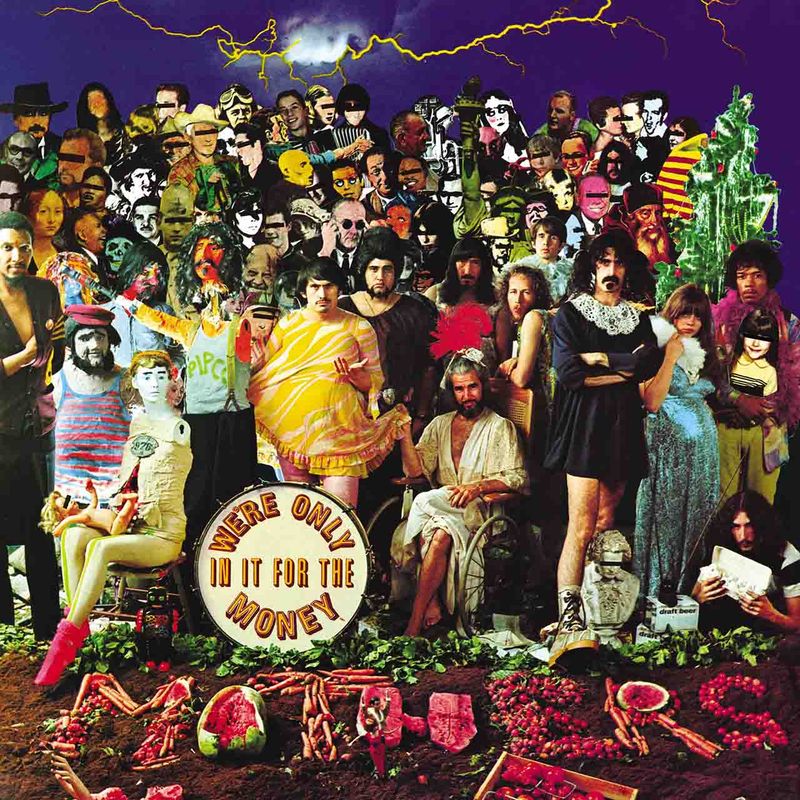
Frank Zappa and The Mothers of Invention weren’t exactly known for subtlety, and their “We’re Only in It for the Money” cover was no exception. A parody of The Beatles’ iconic Sgt. Pepper’s Lonely Hearts Club Band, this cover was as satirical as a late-night comedy sketch.
Stores didn’t get the joke, though, and some refused to stock it. But hey, Zappa didn’t care—Zappa never cared. He was too busy making music that was as edgy as his album covers. This cover is a classic example of how humor and satire can be just as powerful as a power chord.
It’s a visual reminder of a band that dared to poke fun at the establishment, proving that sometimes, you’ve got to laugh at the world, even if the world isn’t laughing with you.
5. Blind Faith – Blind Faith (1969)
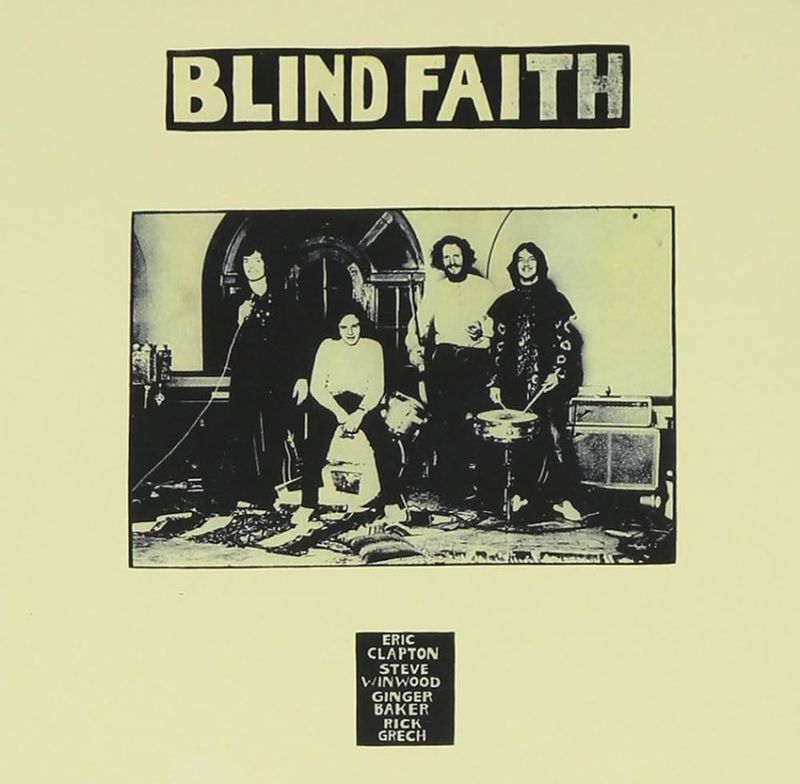
Blind Faith’s self-titled album cover featured a topless young girl holding a toy plane, and boy, did it cause a stir. The backlash was swift and loud, like a drummer who just realized they missed their cue. People were outraged, and calls for alternate covers were as relentless as the band’s guitar solos.
Eventually, a more conservative cover was released, featuring a photograph of the band—fully clothed, of course. This original cover has since become a collector’s item, a piece of rock history that’s as divisive as it is sought after.
It serves as a stark reminder that sometimes, pushing boundaries can land you in hot water, but it can also create a lasting legacy. Blind Faith may have had a short-lived career, but this cover ensures they’ll never be forgotten.
6. John Lennon & Yoko Ono – Unfinished Music No. 1: Two Virgins (1968)

When John Lennon and Yoko Ono released “Unfinished Music No. 1: Two Virgins,” they did what only they could do—pose in full-frontal nudity, right on the cover. Talk about baring it all! Most stores refused to stock it unless it was wrapped in a plain brown wrapper.
Nope, that’s not a euphemism. The cover was as avant-garde as the music within—some would say it was a bold statement about love and vulnerability. Others just thought it was awkwardly daring.
Either way, the album cover remains a talking point, a glimpse into a couple who danced to the beat of their own drum. It’s a testament to Lennon and Ono’s willingness to break the mold, even if it meant putting themselves on display in the most literal sense.
7. The Rolling Stones – Beggars Banquet (original 1968 cover)
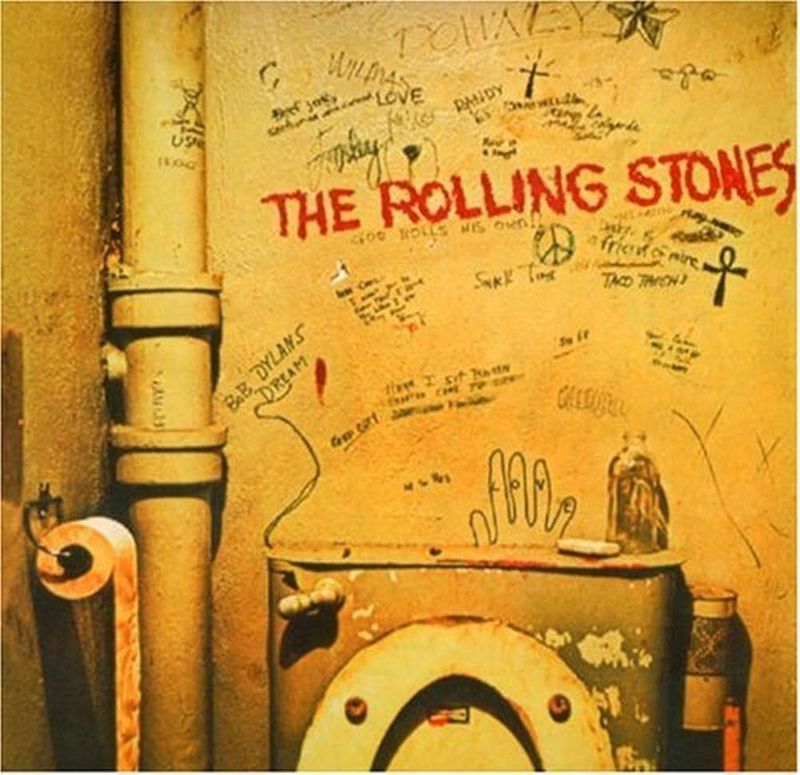
The Rolling Stones absolutely nailed the ‘gritty’ aesthetic with the original cover for “Beggars Banquet.” The artwork featured a bathroom wall covered in graffiti, which was apparently a bit too ‘real’ for the stores of the time.
Instead of appreciating the raw, rebel charm, stores opted for a more ‘polite’ cover—an invitation card. Yawn. But here’s the kicker: this unrefined version has become iconic in its own right. It’s an unapologetic piece of rock history that speaks volumes about the band’s knack for stirring the pot.
This cover is evidence that sometimes, the bathroom wall tells a story worthy of framing. The Stones had a knack for controversy, and this album is a testament to their ability to make even the most mundane settings seem rebellious and cool.
8. The Velvet Underground & Nico – The Velvet Underground & Nico (1967)

Back in 1967, Andy Warhol’s banana art for The Velvet Underground & Nico seemed harmless enough, until you flipped it around. The back cover featured a risqué image of a torso in leather, which wasn’t exactly ‘grandma-approved.’
Lawsuits followed, and the censorship police were out in full force. Collectors now cherish this album, quirks and all. This cover is a lesson in how art can challenge norms, provoke thought, and sometimes, lead to a courtroom.
Despite the initial backlash, it remains a pivotal piece of music history, symbolizing a band that dared to push boundaries. It’s a reminder that sometimes, the best art isn’t the one that’s safe for all audiences, but the one that makes you think twice.
9. The Fugs – Tenderness Junction (1968)
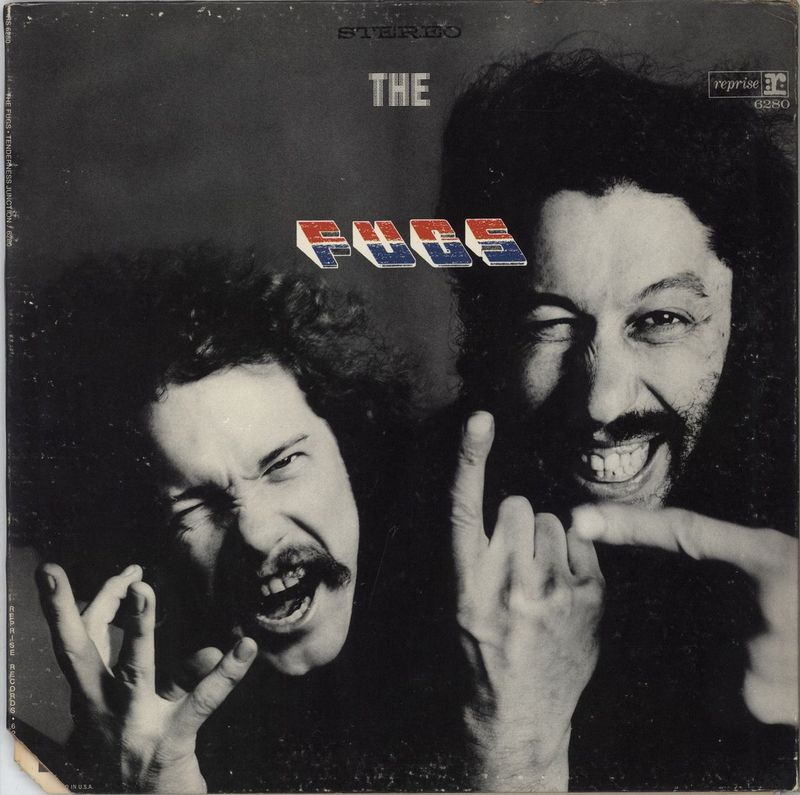
The Fugs were the undisputed kings of counterculture, and their “Tenderness Junction” album cover was a testament to their rebellious spirit. Between the anti-war lyrics and the provocative photo collage, this album gave conservative shops the heebie-jeebies.
It was a visual protest, a psychedelic middle finger to the establishment. The Fugs didn’t shy away from controversy; they embraced it like an old friend. Today, this cover is cherished by collectors who appreciate its raw, unapologetic message.
The album encapsulates a time when music was a vehicle for social change, and the cover was its billboard. It’s a reminder that sometimes, art needs to be loud, brash, and a little bit uncomfortable to make a point. And boy, did The Fugs make their point loud and clear.
10. The Soft Machine – Volume Two (1969)
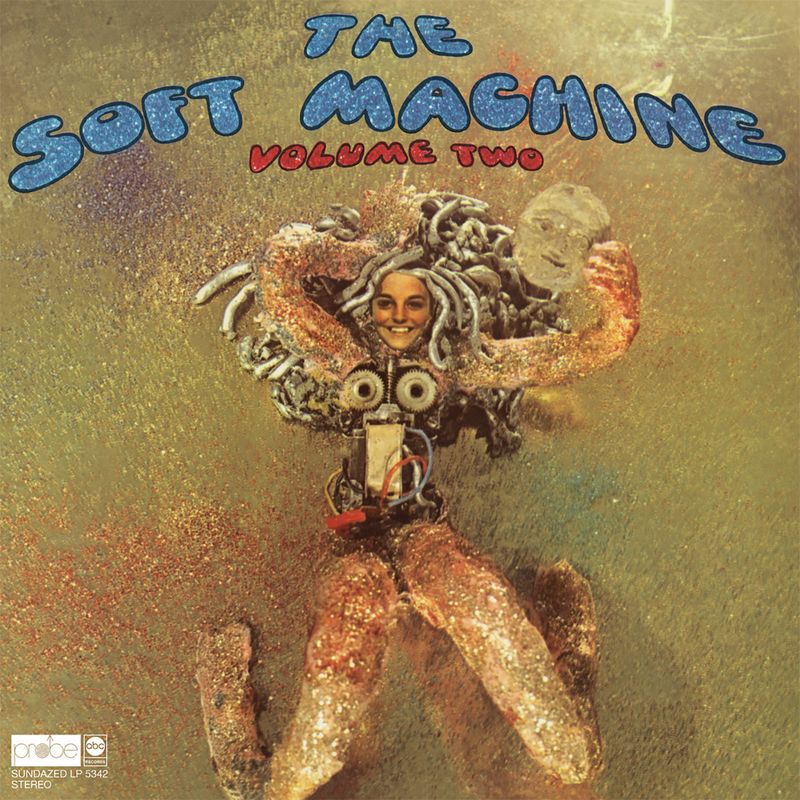
The Soft Machine’s “Volume Two” wasn’t X-rated, but its surreal, disorienting imagery freaked out more than a few stores and parents. With abstract shapes and psychedelic elements, it was like staring into a kaleidoscope while riding a merry-go-round.
The cover was as unconventional as the band’s sound, which left many wondering, ‘What is this psychedelic jazz madness?’ It’s an album that defied categorization, much like its cover. Today, it stands as a testament to the avant-garde spirit of the ’60s when pushing the envelope was the norm.
It’s a reminder that sometimes, confusion and intrigue can be as powerful as a catchy melody. For those brave enough to embrace the chaos, “Volume Two” offers a visual and auditory experience that’s as unique as it is unforgettable.
11. Nico – Chelsea Girl (1967)
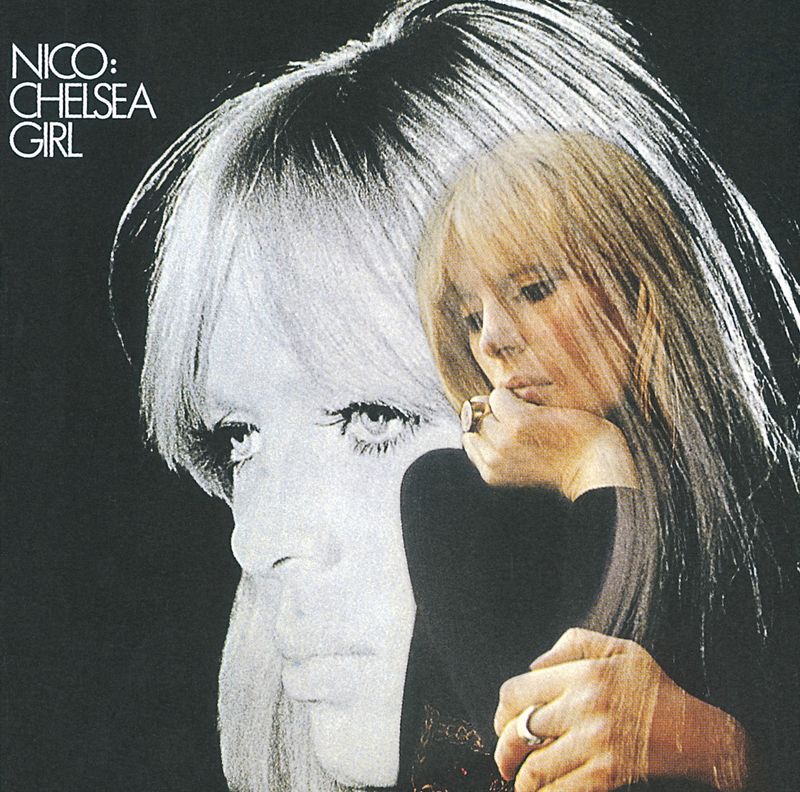
Nico’s “Chelsea Girl” cover wasn’t graphic, but it was haunting enough to disturb more conservative outlets. The cold, ethereal portrait of Nico herself seemed to defy the ’60s norms of femininity. She looked distant, aloof, and unapologetically herself.
While the music inside was a collection of folk and pop, the cover was an enigmatic puzzle that intrigued and alienated in equal measure. Today, it’s seen as a classic, a visual representation of an artist who marched to the beat of her own drum.
It’s a reminder that sometimes, the most powerful statement you can make is simply being your authentic self. Nico’s cover remains a mysterious enigma, captivating those who dare to look beyond the surface, and challenging perceptions of what album art should be.
12. Big Brother and the Holding Company – Cheap Thrills (1968)
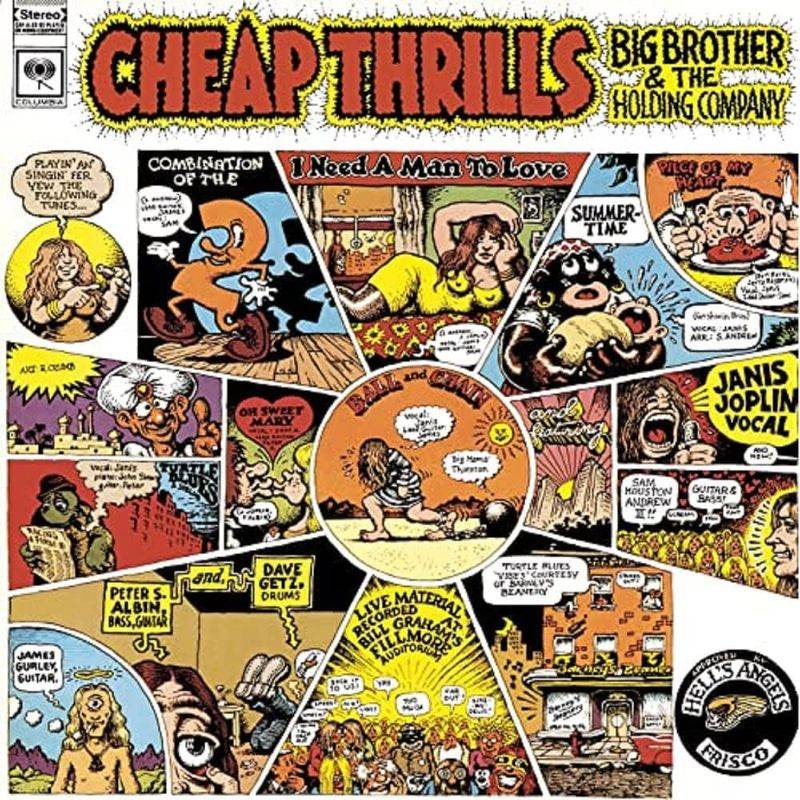
Janis Joplin and Big Brother and the Holding Company hit a home run with their “Cheap Thrills” album cover, illustrated by the legendary R. Crumb. The comic-style art was vibrant, chaotic, and just a tad risqué for some retailers, who wanted a more ‘respectable’ look for Janis. But come on, respectability wasn’t exactly Janis’s style.
The cover captured the spirit of the music within—wild, unfiltered, and unapologetically bold. Decades later, it’s celebrated as a masterpiece of both art and music. It’s a reminder that sometimes, the best art is the one that dares to be different.
Janis and her band didn’t just break the mold—they smashed it with a sledgehammer. This cover stands as a testament to the power of individuality and the beauty of breaking the rules.
13. The Deviants – Ptooff! (1967)
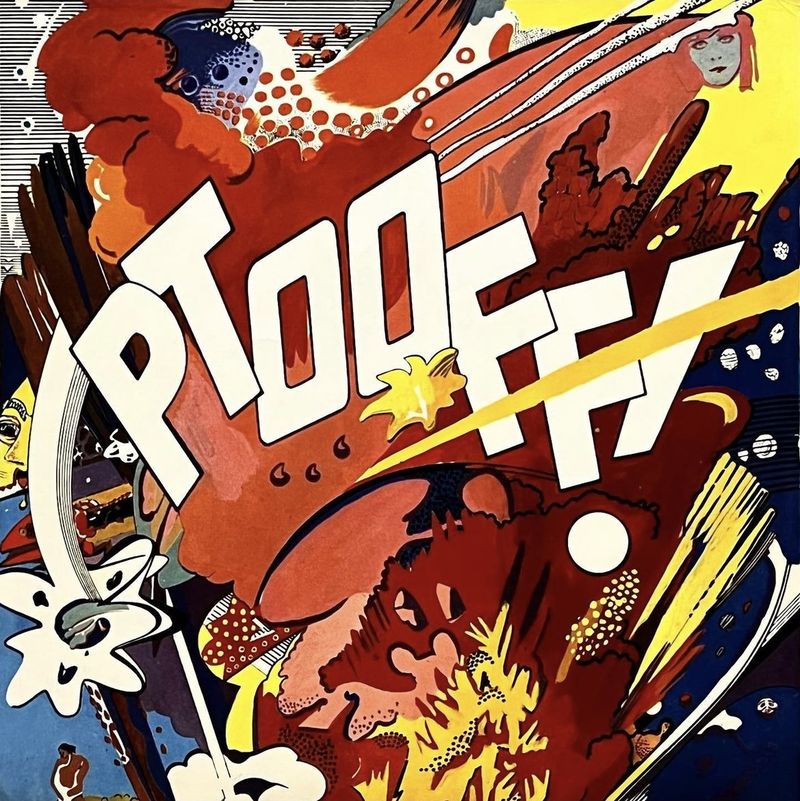
The Deviants lived up to their name with “Ptooff!,” an album released in a giant newspaper-style poster that no label would dare touch. The provocative art and bold messages were a middle finger to the mainstream, a declaration of independence in a world of conformity.
The cover unfolded like a rebellious manifesto, filled with chaotic yet meaningful imagery that left a lasting impression. It was as much a piece of art as it was a piece of music. Today, collectors treasure it as a symbol of a band that refused to play by the rules.
The Deviants may have been outliers, but their cover remains a testament to the power of punk and the spirit of rebellion. It’s a reminder that sometimes, you’ve got to make your own rules to truly stand out.
14. Country Joe & the Fish – I-Feel-Like-I’m-Fixin’-to-Die (1967)
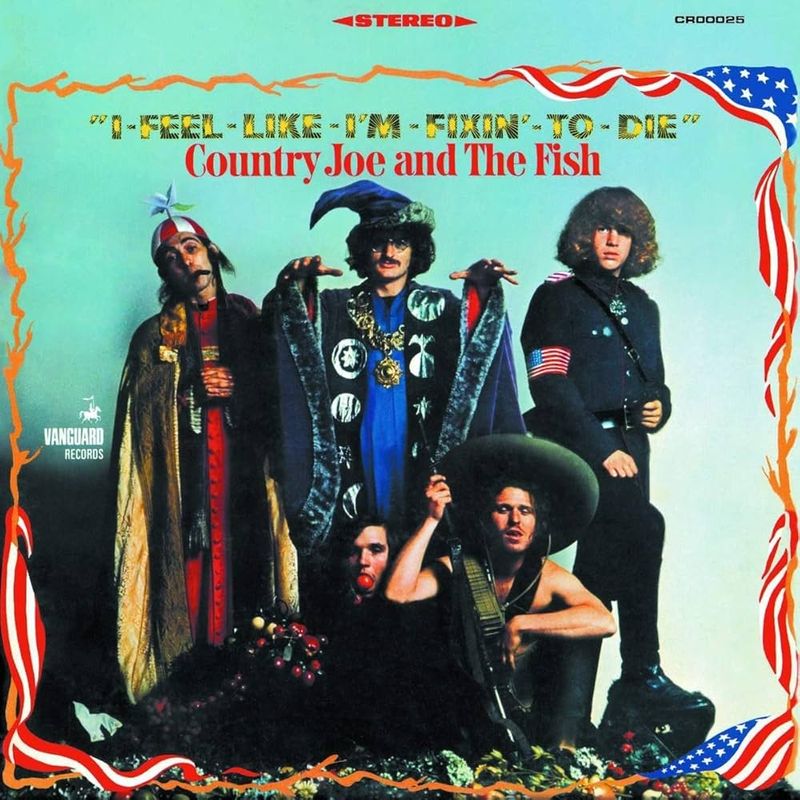
Country Joe & the Fish didn’t hold back with their “I-Feel-Like-I’m-Fixin’-to-Die” album cover. The Vietnam satire and psychedelic death imagery caused quite a stir, like a protest sign at a peace rally. It was a bold visual statement that left some stores sweating and others scrambling for an alternate version.
But the album cover wasn’t just about shock value; it was about making a point, a protest against a war that had shaken the world to its core.
Today, it stands as a powerful reminder of music’s ability to provoke thought and inspire change. It’s a cover that speaks to the heart of the ’60s—a time when art and activism went hand in hand. For those who dare to look, it offers a glimpse into a world where music was more than just sound.
15. The Rolling Stones – Let It Bleed (1969)

“Let It Bleed” by The Rolling Stones featured a cover with a cake made of various objects being stabbed, which wasn’t banned, but was unsettling enough for some stores to request alternate packaging. The image was as chaotic as a rock concert, and just as mesmerizing.
It captured the spirit of the album within—unpredictable, raw, and full of energy. The cover stands as a reminder that sometimes, art needs to be a little messy to capture the beauty of chaos. Today, it’s celebrated as a classic, a piece of rock history that’s as daring as it is deliciously disturbing.
It’s a testament to the band’s willingness to push boundaries and challenge norms. For those who appreciate the unconventional, “Let It Bleed” offers a visual feast that’s hard to forget.
16. Julie London – With Body & Soul (1967)
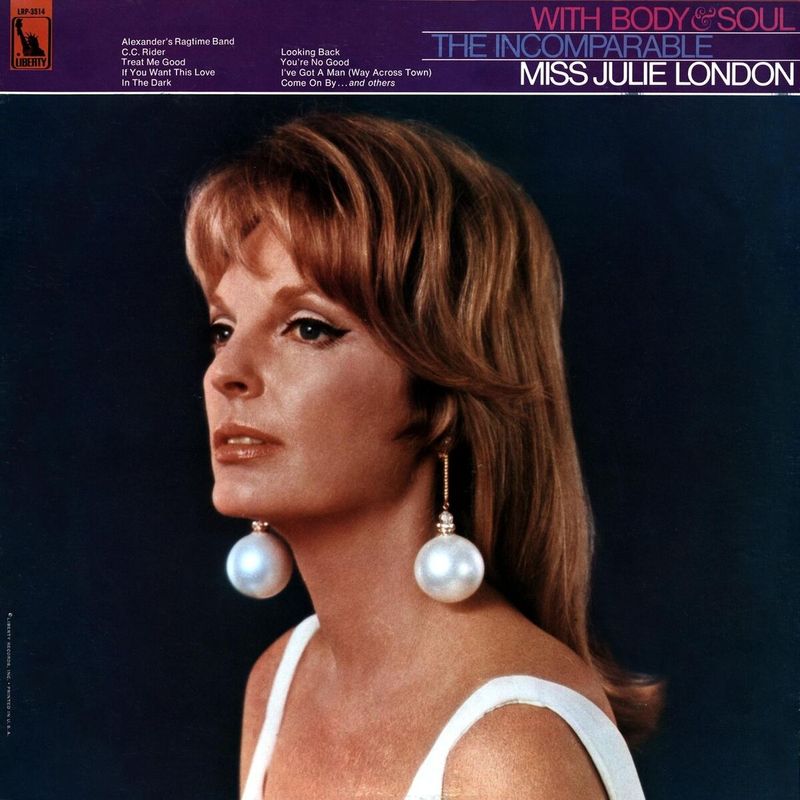
Julie London didn’t need much to make headlines with her “With Body & Soul” album cover. Just lounging in next to nothing was enough to make the cover sell like hotcakes and cause more than a few store owners to clutch their pearls.
The cover was as alluring as London’s sultry voice, and just as unforgettable. It was a snapshot of a time when a little skin could stir up a lot of conversation. Today, it’s seen as a classic, a reminder that sometimes, less is more.
London’s cover captures the essence of an era when album art was as much about the image as it was about the music. It’s a testament to her enduring allure and the power of a provocative pose, leaving a lasting impression on those who dare to look.
17. The Gun Club – Fire of Love (original early version)
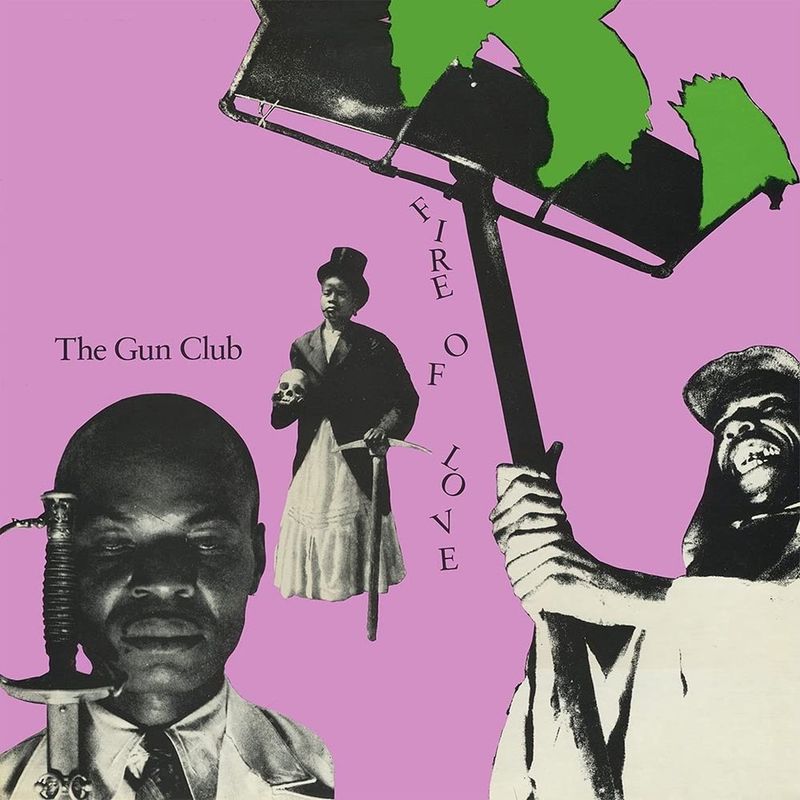
Though The Gun Club’s “Fire of Love” didn’t officially drop until the early ’80s, an unreleased 1960s version had a cover featuring voodoo and burning crosses. It was shelved for obvious reasons, but remains a fascinating piece of rock lore.
The cover exuded dark, mysterious vibes that were as tantalizing as they were controversial. It was a visual testament to a band unafraid of pushing boundaries, even if it meant skirting the line between art and provocation.
Today, this early version is a collector’s dream, a reminder of a time when album covers could be as daring as the music they encased. It’s a symbol of rebellion, an album cover that dared to challenge conventions and embrace the darker side of artistry. For those who appreciate the unconventional, it remains an intriguing piece of music history.
